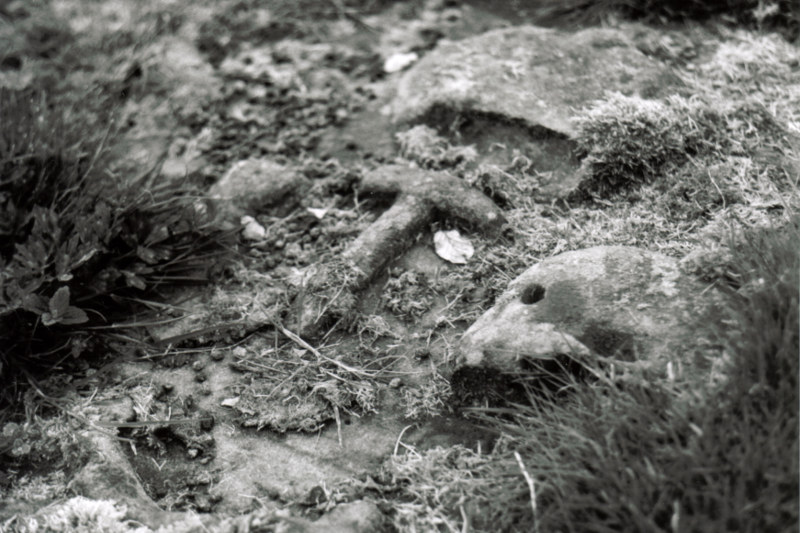I can’t remember if I ever posted any of the black and whites I took in Stirling in Scotland. I may not have because they were developed from black and white film later; I was so anxious to get my Holga photos developed that I forgot about these ones.
One of the areas that I studied in historical archaeology was gravestone symbols. In many cases you can tell a lot from the art on a gravestone — about the time period, mortuary trends and I would even go so far as to say you could identify the artist of the stone based on the style. I’ve seen stones in Nova Scotia that could easily be traced back to an artist in Boston.
This little stone pictured above fascinates me. It contains a skull but is nothing like the skulls that I’ve seen on New England stones — stones that contain the so called death’s head, cherub, willow and urn. I could never date or place this little stone until I found a book on Project Guttenburg written by a self described “Gravestone Rambler.”
Skulls on tombstones were extremely popular in the early to mid-1700s and in North America you can see them until roughly the 1780s when they were most often replaced by the cherub and then an urn type design (seen in a lot in the 1800s).
In browsing though the images and descriptions of UK stones in In Search of Gravestones Old and Curious it looks as though skulls like the one above were popular in the UK in the 1760s and were — again — locally designed.
Two things I find interesting about this particular stone are: the skull is facing sideways instead of out; and, there are no cross bones (like a pirate flag, which was very common during this period) but rather a religious cross.
The skull is obviously looking at the cross. Perhaps the original owner was clergy; perhaps it is a symbol for looking to your religion or going back to God. I didn’t study it long enough to get an understanding. However, I loved that the stone looked as though it had travelled a fair distance from its original location and that it was on the verge of being completely absorbed by nature. This is why I photographed it.
